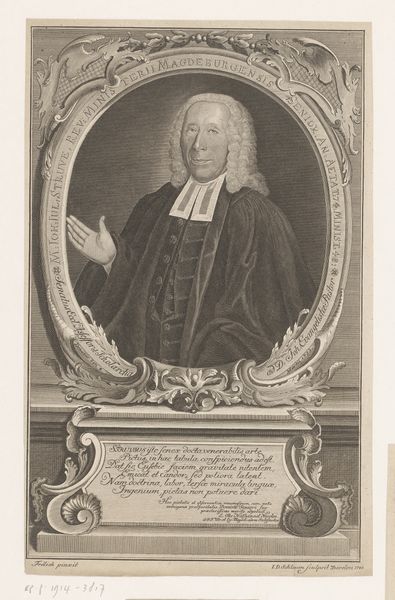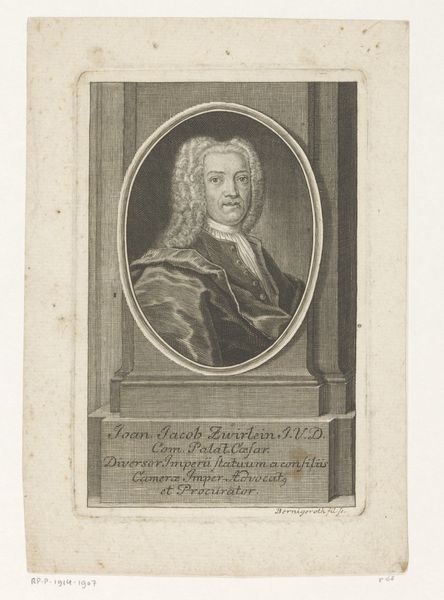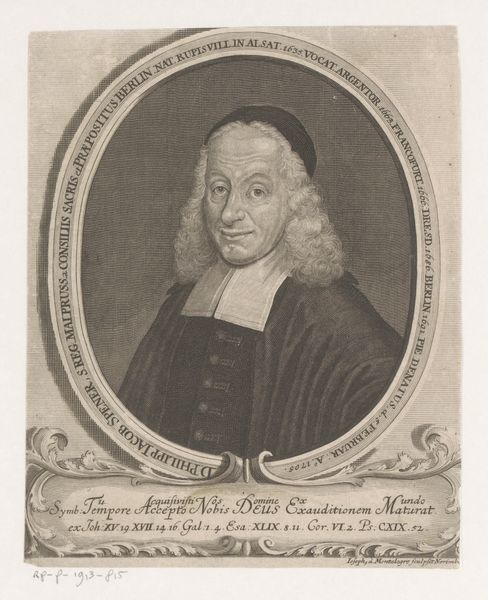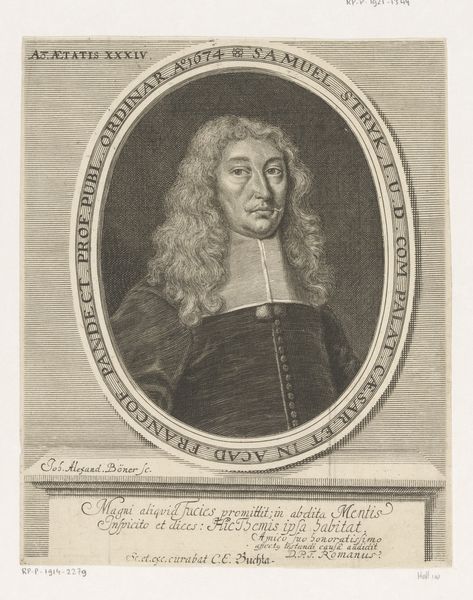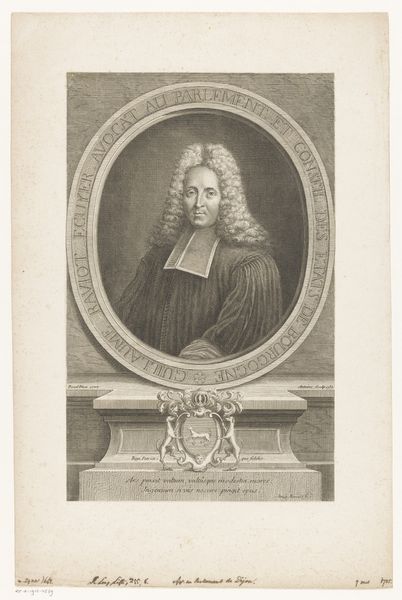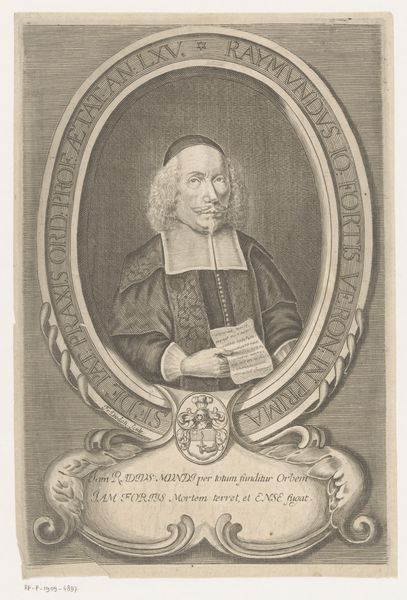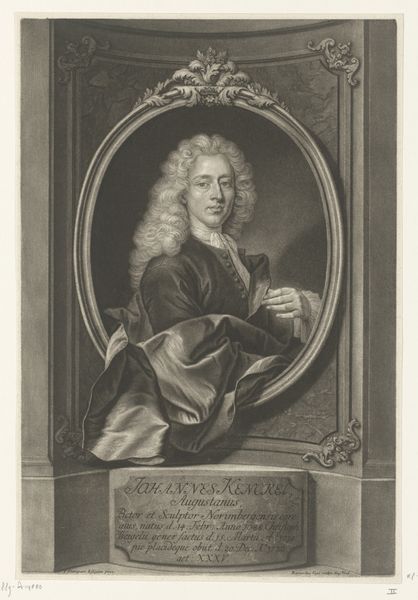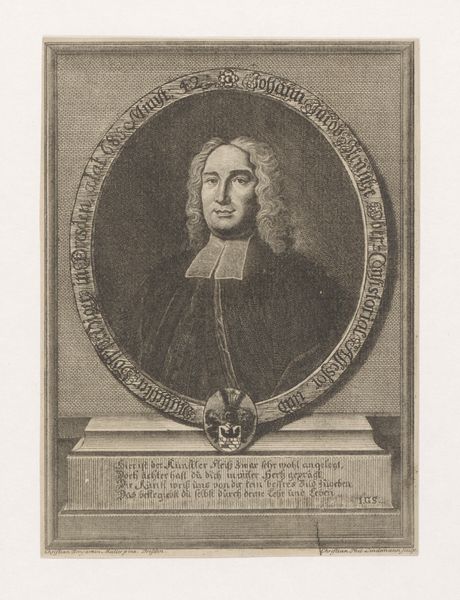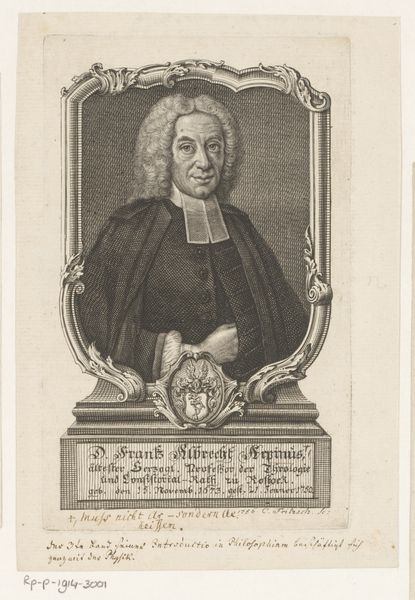
metal, engraving
#
portrait
#
baroque
#
metal
#
line
#
history-painting
#
northern-renaissance
#
engraving
Dimensions: height 312 mm, width 195 mm
Copyright: Rijks Museum: Open Domain
Editor: So, here we have “Portret van Friedrich Adolph Lampe,” created sometime between 1705 and 1729, currently held at the Rijksmuseum. It's an engraving on metal by Christian Fritzsch, I find the lines of the engraving creates a very formal and kind of reserved feel to it. What strikes you most about this piece? Curator: For me, it's how this portrait functions within the visual culture of its time. Engravings like this served as a form of social currency. Think about it: a printed portrait disseminated the image of Friedrich Adolph Lampe, who was likely a prominent theologian or figure of authority, much more widely than a painted portrait ever could. How do you think this wider distribution affects his image and the way the public perceived him? Editor: I guess making him more visible and creating a certain type of image. Was there some political intention as well? Curator: Exactly. The deliberate inscription encircling his portrait – have you taken a look at that closely? The phrasing used, the way he’s being framed - these are carefully constructed elements intended to project authority, piety, and intellectual prowess. Patronage was a crucial dynamic; somebody commissioned and paid for this. This brings visibility, lends itself to interpretations of power structures, intellectual circles, and how reputations were carefully curated. The print functions as a social and political statement, not just a likeness. Who do you imagine was the intended audience? Editor: Possibly other academics, or maybe people associated with his church? It sounds like this was a calculated move to promote an agenda. Curator: Precisely. So when we view it now, we see beyond just an image of a man; we see a piece actively participating in the social and intellectual currents of its time. Editor: That's a whole different way of looking at it than just admiring the artistry! It helps to see how images actively participate in power. Curator: Indeed. And that awareness shapes how we understand not only this piece but also the very public role of art throughout history.
Comments
No comments
Be the first to comment and join the conversation on the ultimate creative platform.
